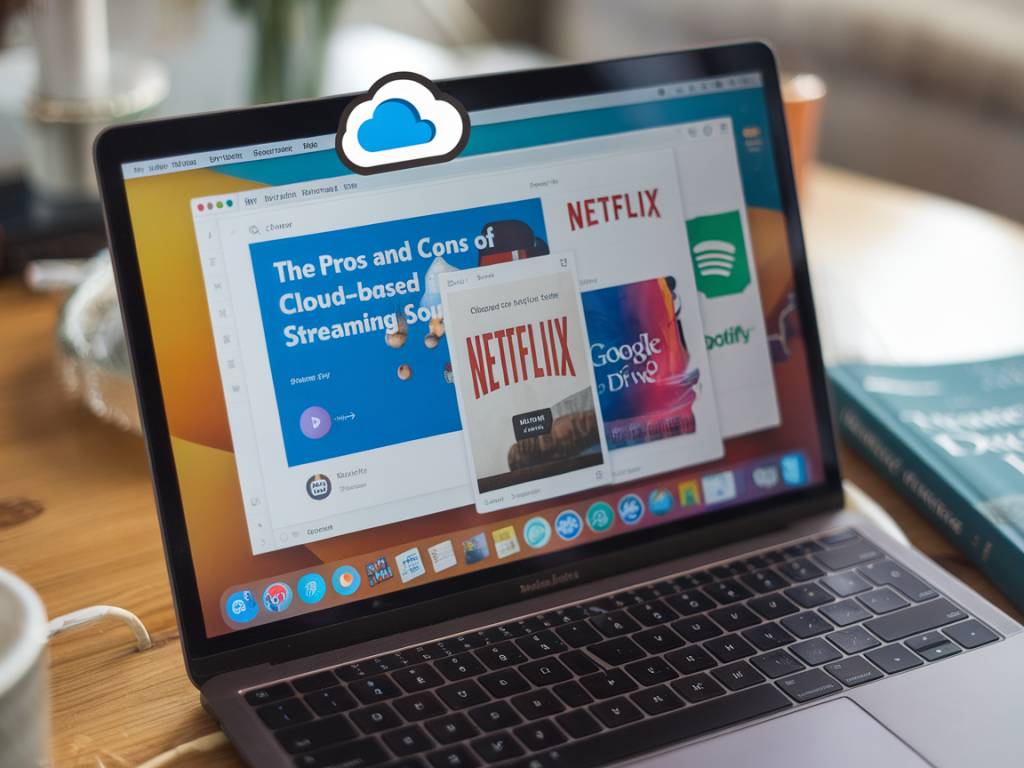The pros and cons of cloud-based streaming solutions

The pros and cons of cloud-based streaming solutions
In recent years, cloud-based streaming solutions have gained significant traction, transforming the way we generate, distribute, and consume media content. As a journalist specialized in TV, broadcasting, and YouTube, I’ve had the chance to explore the intricate details of this technological evolution. Today, I’ll dive into the pros and cons of cloud-based streaming solutions, providing you with a comprehensive overview to help you make informed decisions regarding this technology.
Advantages of Cloud-Based Streaming Solutions
Cloud-based streaming solutions offer several compelling benefits that cater to various needs within the broadcasting and streaming industries. Here are some of the key advantages:
Scalability
One of the most significant advantages of cloud-based streaming is its scalability. Traditional streaming infrastructure often involves substantial upfront investments in hardware and bandwidth. In contrast, cloud solutions enable companies to scale their services up or down based on demand without hefty investments. This flexibility ensures efficient resource utilization and cost savings.
Reliability and Redundancy
Cloud platforms are designed with reliability and redundancy in mind. Top cloud service providers like AWS, Google Cloud, and Microsoft Azure offer robust infrastructure with multiple data centers globally. This setup minimizes the risk of downtime and ensures uninterrupted streaming services, which is crucial for live broadcasts and on-demand content.
Cost-Effectiveness
Moving to the cloud can lead to considerable cost savings. Cloud-based streaming solutions typically operate on a pay-as-you-go model, allowing companies to pay only for what they use. This model is particularly beneficial for small and medium-sized enterprises (SMEs) that may not have the capital to invest in expensive hardware and software upfront.
Ease of Deployment and Management
Cloud-based streaming solutions simplify the deployment and management of media content. Service providers offer user-friendly interfaces and APIs that make it easier to set up and manage streaming services. These solutions also often come with built-in features such as encoding, transcoding, and content delivery network (CDN) integration, further streamlining the process.
Global Reach
Cloud providers have a broad network of data centers worldwide, enabling content producers to deliver their media to a global audience with minimal latency. This global reach ensures a consistent and high-quality viewing experience for users regardless of their geographic location, making it an attractive option for international broadcasters and streaming services.
Disadvantages of Cloud-Based Streaming Solutions
Despite the numerous benefits, cloud-based streaming solutions are not without their drawbacks. Here are some of the key challenges associated with this technology:
Dependency on Internet Connectivity
Cloud-based streaming solutions rely heavily on stable and high-speed internet connections. Any disruption or degradation in internet connectivity can adversely affect the streaming experience. This dependency can be a significant drawback in regions with unreliable internet infrastructure.
Potential Security and Privacy Concerns
Storing and transmitting media content over the cloud can raise security and privacy concerns. While leading cloud providers invest heavily in security measures, no system is completely immune to breaches. Content producers must ensure they implement robust security protocols and choose reputable cloud service providers to mitigate these risks.
Ongoing Operating Costs
While cloud-based solutions can offer cost savings, they also involve ongoing operating expenses. The pay-as-you-go model, although cost-effective, requires continuous financial outlay based on usage. Over time, these costs can accumulate, potentially surpassing the expenses of on-premises solutions for some organizations.
Vendor Lock-In
Another critical consideration is the risk of vendor lock-in. Once a company commits to a specific cloud provider, migrating to another platform can be complex and costly. Companies must carefully evaluate their long-term needs and consider potential migration challenges before committing to a particular cloud provider.
Latency Issues
Although cloud providers strive to deliver low-latency streaming, there can still be challenges in maintaining a consistent quality of service. Factors such as geographic distance from data centers and varying internet speeds can introduce latency, affecting the viewer’s experience, particularly for live streaming events.
Key Considerations for Adopting Cloud-Based Streaming Solutions
When evaluating cloud-based streaming solutions, it’s essential to consider several factors to ensure the chosen solution aligns with your needs and objectives:
Assessing Current and Future Needs
Understanding your current and future streaming requirements is crucial. Consider factors such as expected audience size, content type, and geographic reach. A thorough assessment will help in selecting a cloud provider and service plan that adequately meets your demands.
Evaluating Security and Compliance
Security and compliance are paramount, especially for organizations handling sensitive or proprietary content. Verify that the cloud provider adheres to industry standards and regulatory requirements. Additionally, implement robust security measures such as encryption, access controls, and regular security audits.
Cost Analysis
Conduct a detailed cost analysis to compare the expenses of cloud-based solutions against traditional on-premises setups. Consider factors such as initial investment, ongoing operational costs, and potential cost savings over time. This analysis will provide a clearer picture of the financial implications of transitioning to a cloud-based streaming solution.
Technical Support and Customer Service
Reliable technical support and customer service are critical when dealing with cloud-based services. Assess the support options provided by the cloud provider, including response times, availability, and the expertise of the support team. Opt for a provider that offers robust support to address any technical issues promptly.
Popular Cloud-Based Streaming Solutions
Several cloud-based streaming solutions have gained popularity due to their features, reliability, and scalability. Here are a few notable options:
Amazon Web Services (AWS)
AWS offers a comprehensive suite of media services, including AWS Elemental MediaLive, MediaPackage, and CloudFront CDN. These services enable content producers to create, distribute, and monetize media content with ease.
Google Cloud Platform (GCP)
Google Cloud’s Media Solutions provide robust tools for video encoding, transcoding, and streaming. GCP’s global network and integration with YouTube offer unparalleled reach and scalability for media content delivery.
Microsoft Azure
Microsoft Azure Media Services offer end-to-end support for video workflows, including encoding, live and on-demand streaming, and content protection. Azure’s extensive network infrastructure ensures high availability and low latency for viewers worldwide.
IBM Cloud Video
IBM Cloud Video provides a range of streaming solutions, including live streaming, video-on-demand, and enterprise video platforms. Its analytics and monetization features make it a comprehensive solution for diverse streaming needs.
Brightcove
Brightcove offers a cloud-based platform tailored for video content management, live streaming, and monetization. Its robust feature set and ease of use make it a popular choice for broadcasters and content creators.
In conclusion, cloud-based streaming solutions offer numerous benefits, including scalability, reliability, and cost-effectiveness. However, potential challenges such as internet dependency, security concerns, and ongoing operational costs must be carefully considered. By evaluating current and future needs, ensuring security and compliance, conducting cost analyses, and choosing the right provider, organizations can harness the power of cloud-based streaming to deliver high-quality media content to a global audience.





